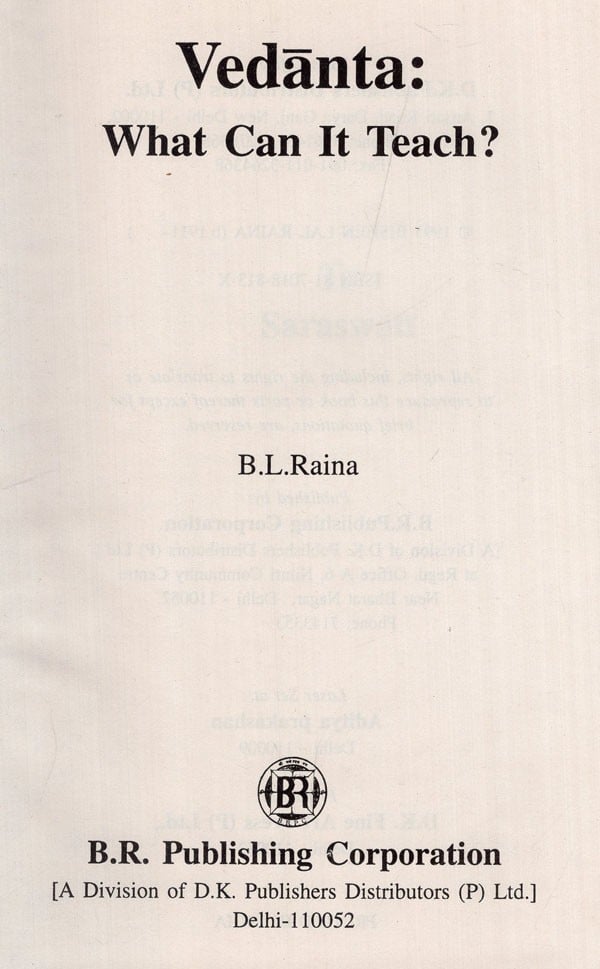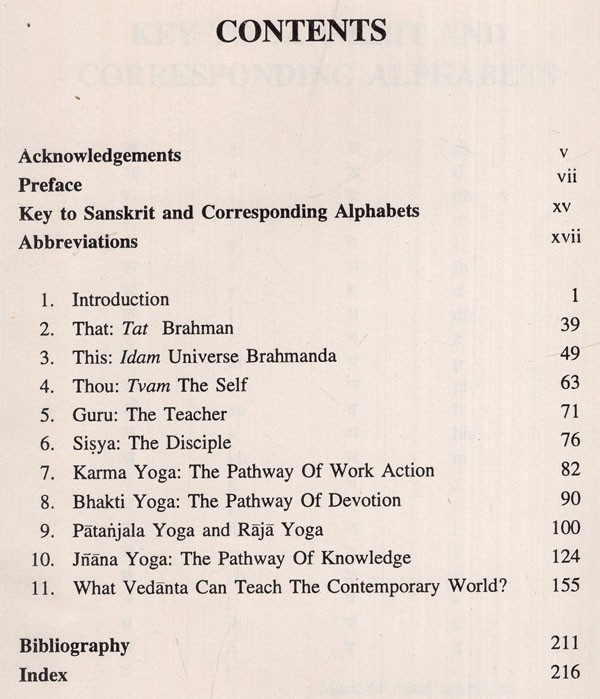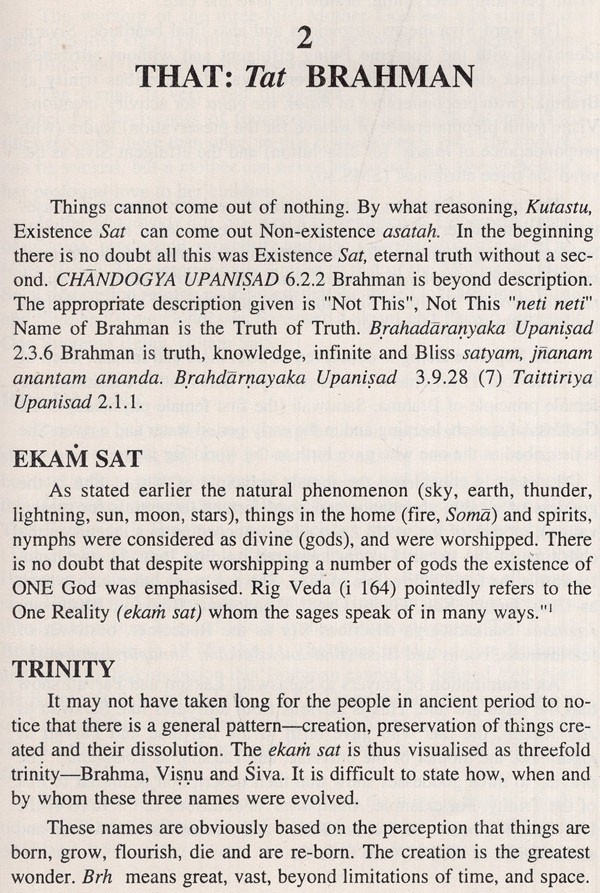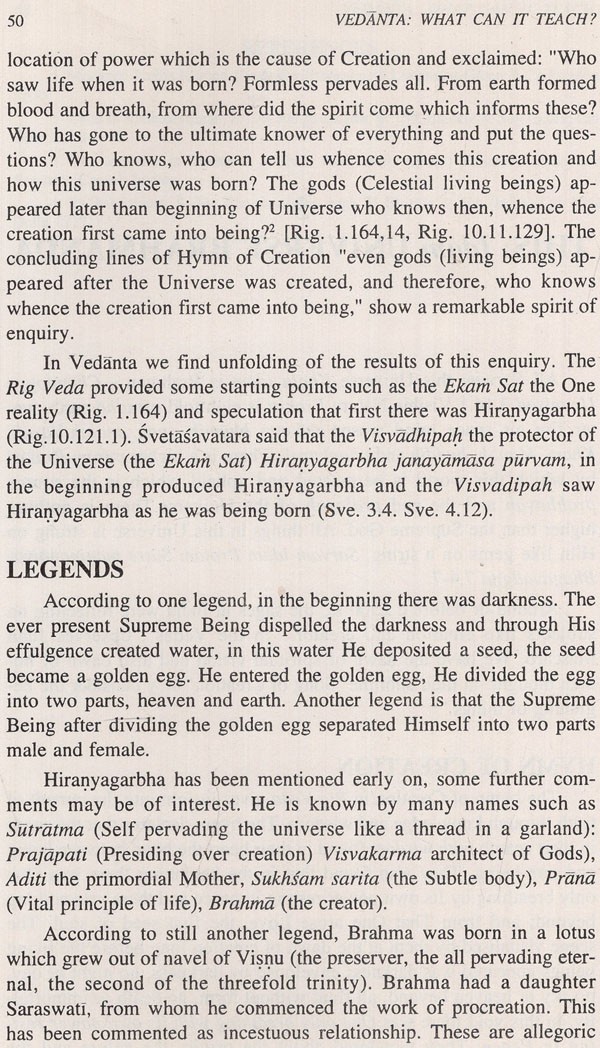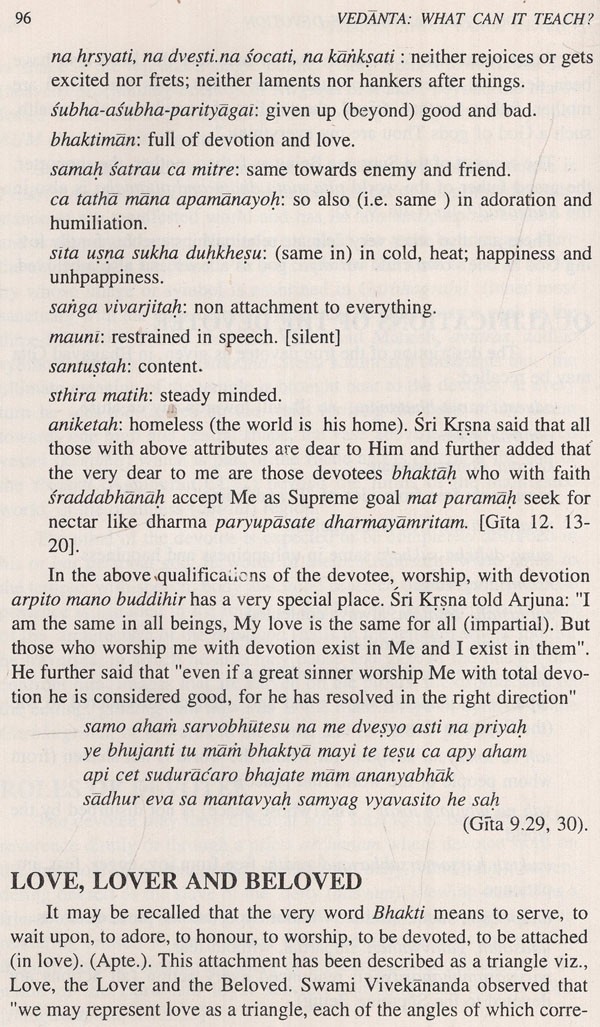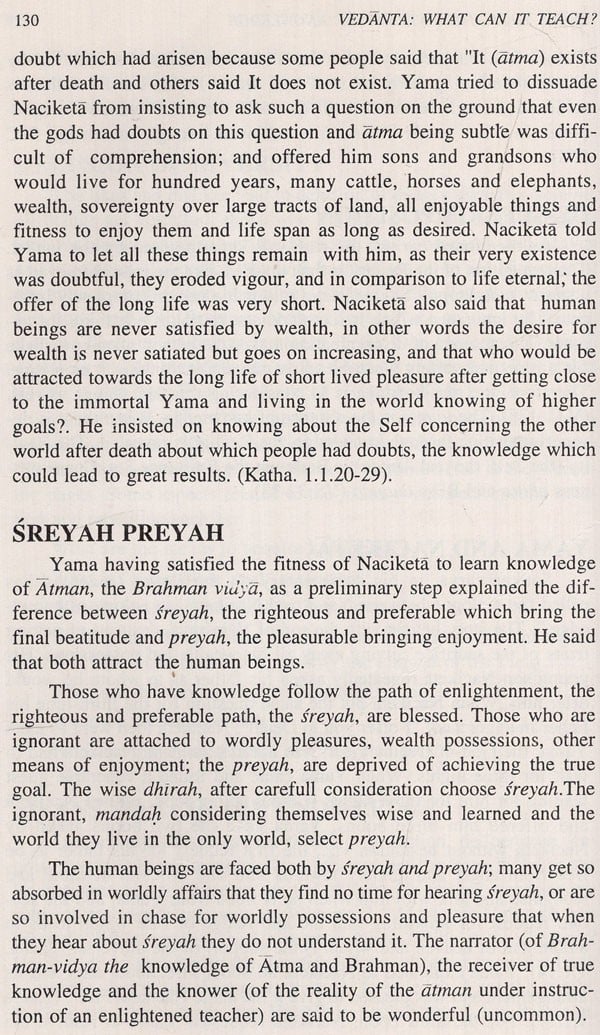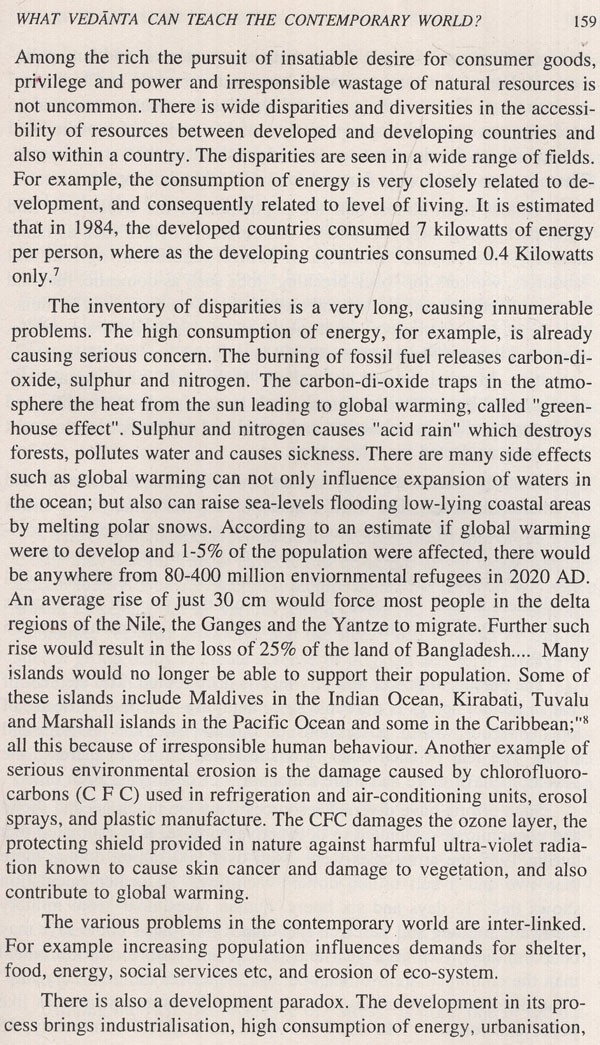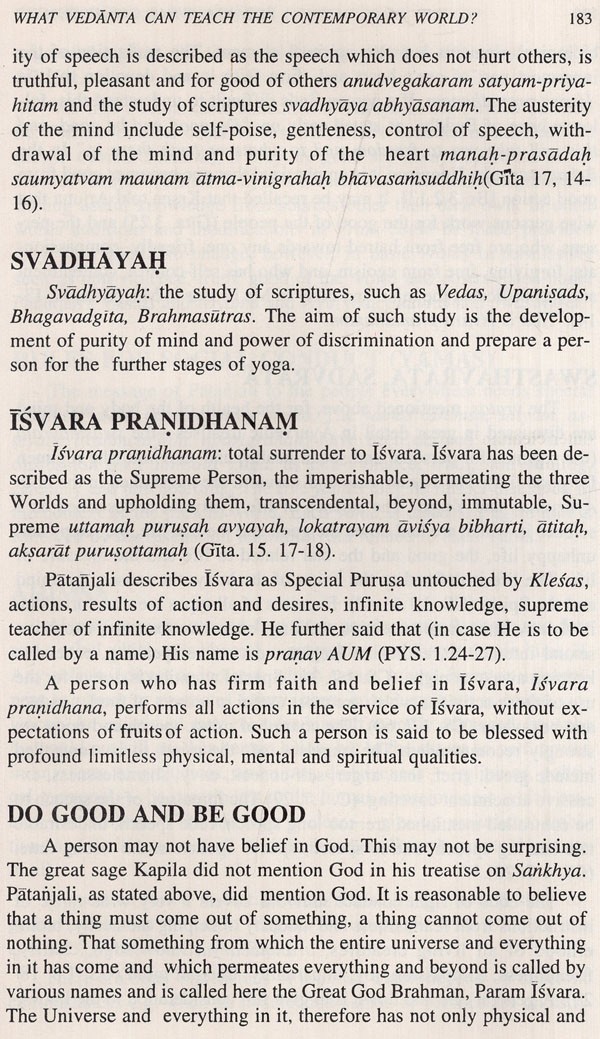
Vendanta: What Can it Teach?
Book Specification
| Item Code: | UAW077 |
| Author: | B.L. Raina |
| Publisher: | B.R. Publishing Corporation |
| Language: | English |
| Edition: | 1995 |
| ISBN: | 817018813X |
| Pages: | 240 |
| Cover: | HARDCOVER |
| Other Details | 8.50 X 5.50 inch |
| Weight | 400 gm |
Book Description
This book presents the rich material on Vedanta, based on Vedas, Vedangas, Up-Vedas, Upanishads, Bhagavadgita, Brahmasutras, Darśanas especially Yoga, and treatises on and related to Vedanta. It gives main aspects of three canons (Upanishads, Brahm Sutra and Bhagvad Gita) collectively called Vedanta and also briefly reviews ancient treatises and rituals; discusses the concept of Brahman (THAT), Universe (THIS), Self (THOU), and THOU ART THAT; the qualifications of the teacher and the pupil; describes Yogas of work, devotion, knowledge and Patanjala/ Raja and explores the lessons of Vedanta for the contemporary world, essential for peace and happiness everywhere and indeed for the sustainable development and the very human survival.
He served in the Army Medical Corps (1940-56), retired as Lieut. Colonel; served as the first Director, Family Planning (1956-65) and then as the first Director, Central Family Planning Institute (1965 69).
He is widely travelled. He was United Nations Senior Family Planning Advisor in Egypt (1970-72): Inter-regional Advisor for Middle East and Africa Employers Orientation in Population Action, International Labour Organisation (1973).
The greatest challenge facing the world is erosion of human values. It is threatening the very human survival. The promotion of ancient concept such as the whole world is one family and the interests in yoga and vedänta are re-emerging.
This book contains glimpses of Vedanta (including yoga), based on the Vedas, the Vedangas, the Upa-Vedas, the Upanisads, the Bhagavad Gita, the Brahmasutras, the Darśanas and treatises on and related to Vedanta. Important Sanskrit verses are cited in Roman Script. English translation of Sanskrit verses is not always literal. The main idea conveyed in the verses is given. The quest for knowledge, no doubt, began before the Vedic period. The development of human thought from pre-Vedic period to the present time is discussed. This quest, by known and a vast number of unknown thinkers over centuries, has been in two directions viz., the quest for knowledge of reality and the quest for improving level of living through developments in arts, sciences and technologies. The roots of the latter are traceable to the former. The knowledge is stated to be without end. The knowledge gathered in the quest for reality upto 500 BC is presented mainly in three treatises, the Prasthanatraya viz., the Upanisads, the Bhagvad Gita and the Brahmasutra collectively called Vedanta. The focus in Vedanta is on THAT Brahman, THIS the universe of names, forms and actions, THOU the Self and the pathways for realization that these three (THAT, THIS & THOU) are really one and THOU ART THAT. The book is mainly devoted to the discussion on these subjects.
Human beings, since their appearance on earth, were faced with enormous problems of their survival and betterment. They experienced happiness and unhappiness, pleasure and pain, health and ill-health. They wondered on their fascinating surroundings-Sun, Moon, Stars, Clouds, Lightening; phenomena of births and deaths; life cycle in humans, animals and plants; activities and changes taking place. Their curiosity seems to have raised many questions such as: What is the cause of pain? How can pain be eliminated? Where and How this Universe was created, sustained and supported? How can ever lasting plea sure be attained?
The events for which there was no explanation were considered to be controlled by gods and spirits, some benevolent and others malevolent. The concept of structure and composition of the body, the soul, rebirth and personal-god appear to have slowly emerged. The rites for blessings of God are traceable to the earlist period of human history.
**Contents and Sample Pages**
